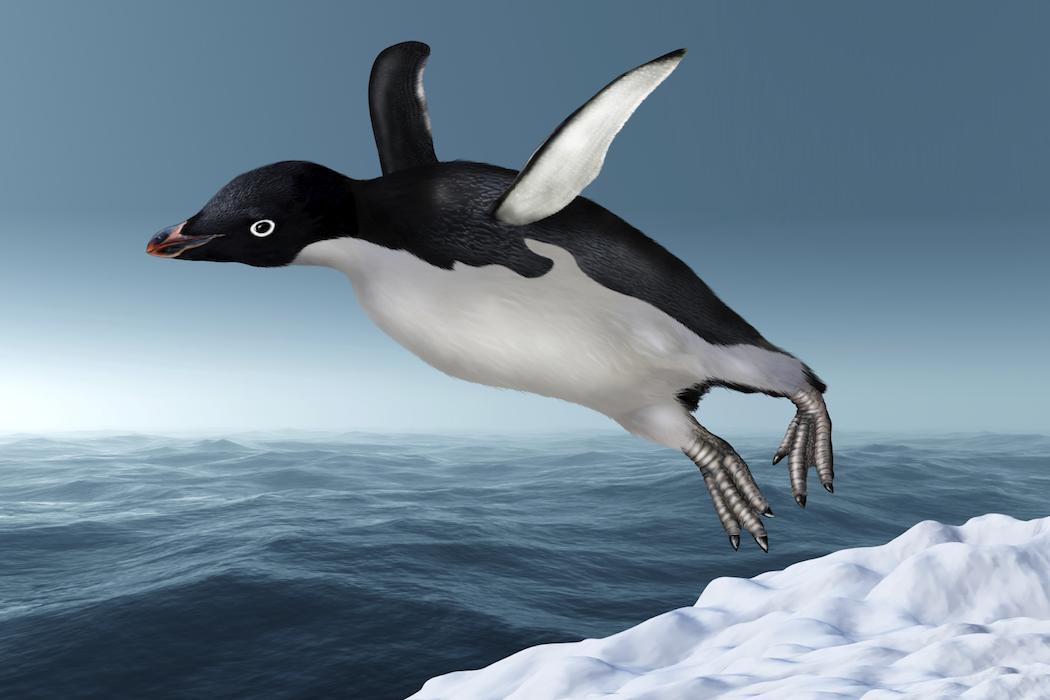A few years ago, I accidentally stumbled across a Discovery Channel Shark Week special called Megalodon: The Monster Shark Lives. My brain was half-broiled from a long day banding pelicans in the unrelenting Texas heat, and all I wanted to do was stare vacantly at the television for an hour or so.
Maybe that was why it took longer than I care to admit for me to notice that something wasn’t right about the documentary. Aside from being unnervingly attractive and well-groomed, the shark experts interviewed didn’t talk, or act, like any scientists I’d ever met. I’d never heard an actual marine biologist suggest that enormous, extinct sharks had roamed the oceans undetected for millennia. Then, one of the divers’ radios failed just as a mysteriously large object appeared on the crew’s sonar detection system. Within seconds, I was online typing “Shark Week hoax?” into the search bar. It couldn’t be real… but, then again, this was the Discovery Channel, and they didn’t just fake entire documentaries. Did they?
They did. Megalodon was entirely fake, as were some other Discovery Channel mega-shark documentaries and similar Animal Planet specials on mermaids (they’re real, apparently, and the government is hiding the evidence). The experience left me a bit shaken. If it took time for a marine scientist to recognize the Megalodon documentary as fiction, how would the general public react? And was the fictional documentary entertainment, or something more sinister?
The BBC, whose breathtaking wildlife documentaries (Life, The Blue Planet, Planet Earth) are the gold standard for presenting the natural world on film, has also produced some of the most memorable animal-related April Fools pranks. It’s an automatic advantage to have Sir David Attenborough in your corner. In 1975, Attenborough narrated a radio program describing a Pacific island chain called the Sheba Islands, in which he played recordings of the Musendrophilus, a yodeling arboreal mouse. Both the islands and the mouse were, of course, fictional.
Later, assisted by other seemingly trustworthy gentleman-naturalists, the BBC produced memorable stories on a mustachioed primate called the lirpa loof (read the words backwards) and a colony of flying penguins. The BBC isn’t alone in reporting new (and never again seen) animal species on April 1st. Other zoological marvels discovered on April Fool’s day include the gull shark, the Tasmanian mock walrus, the trout-pig, and the oh-so-British Cumbrian bogart (half-badger, half fox). In 1999, the journal Nature joined in with its own April Fools prank, an online report on the discovery of a fossilized dinosaur with dragon-like characteristics, dubbed Smaugia volans.
The humor in these pranks comes from the fact that the audience is supposed to be in on the joke. Science–so self-serious and precise that its language at times borders on unintentional comedy–is a ripe target for imitation, and not just on April 1st. Years before Animal Planet tackled mermaids, Karl Banse, a revered deep-sea oceanographer, celebrated his 60th birthday by publishing a scientific treatise on why mermaids went extinct. There’s even an annual Festival of Bad Ad-Hoc Hypotheses, which invites scientists to present evidence for ridiculous scientific theories in elaborate, TED-style talks.
For many people, the attraction of science is that it provides a logical system for exploring a complex, often confounding world. Rather than rejecting things that don’t make sense on the surface, science requires us to examine them critically, and to be willing to test and adjust our understanding of the world as we uncover new evidence. There’s an element of wonder in all of these jokes: the idea that, after all, there’s always more out there to discover. One reason the Megalodon documentary is almost believable, even to a scientist, is the fact that there’s a rare but real precedent for lost species being found again. The most famous of these “Lazarus taxa” is the coelacanth, a prehistoric fish that was known only from the fossil record until a live one turned up in a fishing net in 1939. Science and literature alike owe much inspiration to the idea that deep in the last wildernesses–the oceans, the jungles, outer space–there are creatures still waiting to be found.
Nevertheless, the line between satire and hoax can be fuzzy. Even good-faith efforts to make sure the audience understands the joke don’t always work. The Discovery Channel claims they didn’t intend to mislead the public with Megalodon, but during the documentary they aired only vague disclaimers and never completely clarified that it was a work of fiction. Maybe they weren’t trying to make people believe the monster shark was real, but they certainly weren’t trying very hard not to. Unfortunately, in a world where fear and misunderstanding place many large predators (including most shark species) at risk of extinction, jokes have a narrow margin for error.
Scientific hoaxes aren’t a new phenomenon. W.F. Hoyt, writing for the Kansas Academy of Science in 1907, asserted that, “There have been in all ages, including the present one, ill-informed theorists who believe that the fancies and phantasms that course through their disordered craniums have the same stamp of divine authenticity as a prophetic vision.” He cautions his audience to distinguish between disproven theories–a necessary part of inquiry by even the best scientists–and deliberate fraud. While television and the internet may help spread misinformation, they can also help counter it by offering facts and data. By encouraging people to amass evidence and continually test their own beliefs, science itself offers a tool against the spread and persistence of misinformation.
So, this April Fool’s Day, by all means go forth and discover a new and improbable species of wildlife. Just make sure that, by April 2nd, everyone knows it isn’t real.
Or is it?
PS: Interested in shark: read an interview with real shark expert Dave Ebert or an obituary of Eugenie Clark.







